But in May and June 2014, I ended up walking 800 km from France into Spain because my friend asked me to. It’s that simple. She called me up when we were living in Thailand and asked me to go. Once I figured out what she was talking about, I was in. I’m always up for an adventure.
- For her, it was a bucket list item, a dream in the making for a decade and a half.
- For me, it was a nice thing to do with a month and a half.
- She prepared mentally and spiritually.
- I put a couple of hundred miles on my boots and polished my Spanish.
- She was on a journey of self discovery.
- I was out for a nice walk and some time with my old friend.
I was not the deep end of the pool in this instance. She laughed at me a little, assuring me that the Camino would get to me. I giggled at her meticulous preparations. We were as unlikely a pair as could be when we set out.
She was on her first big adventure and over-prepared, and I was well traveled and still cramming my bag together as we started up the mountain out of St. Jean Pied-de-Port. We learned a lot together on that walk, and ultimately we didn’t finish it together (we’re still friends, don’t worry!).
If you’re considering walking the Camino de Santiago, here’s what you need to know:
Can You Walk It?
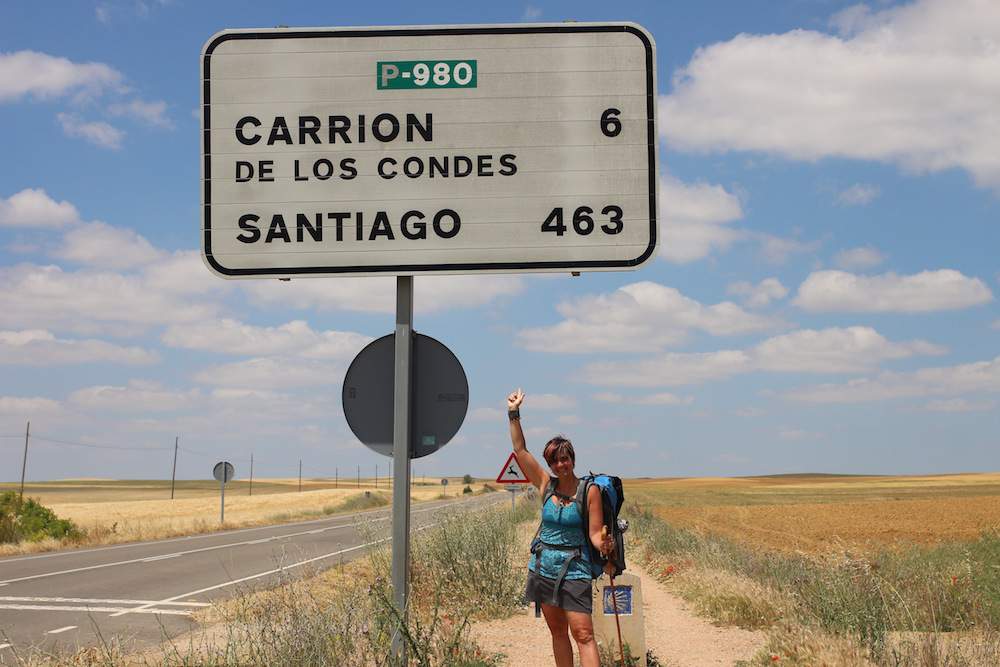
People of all ages, physical shapes and sizes, health and fitness levels do it. I met families with babes in arms who were making the pilgrimage, carrying the child the entire way. I met an 87-year-old woman who was walking it for the third time. I met a mother-daughter trio, in which the daughters were in their mid sixties and the mother in her mid-eighties. I met people walking after knee replacement surgery, and the seriously overweight who were getting there one step at a time. I even met several folks in wheel chairs who, with the help of loyal friends, were on their pilgrimage. I walked with a legion of middle aged folks who’d escaped their desk jobs to clear their heads, and teenage backpackers who were off on their first post-high school adventure.
If you can move forward, you can do the Camino; it’s just a matter of logistics.
Time of Year
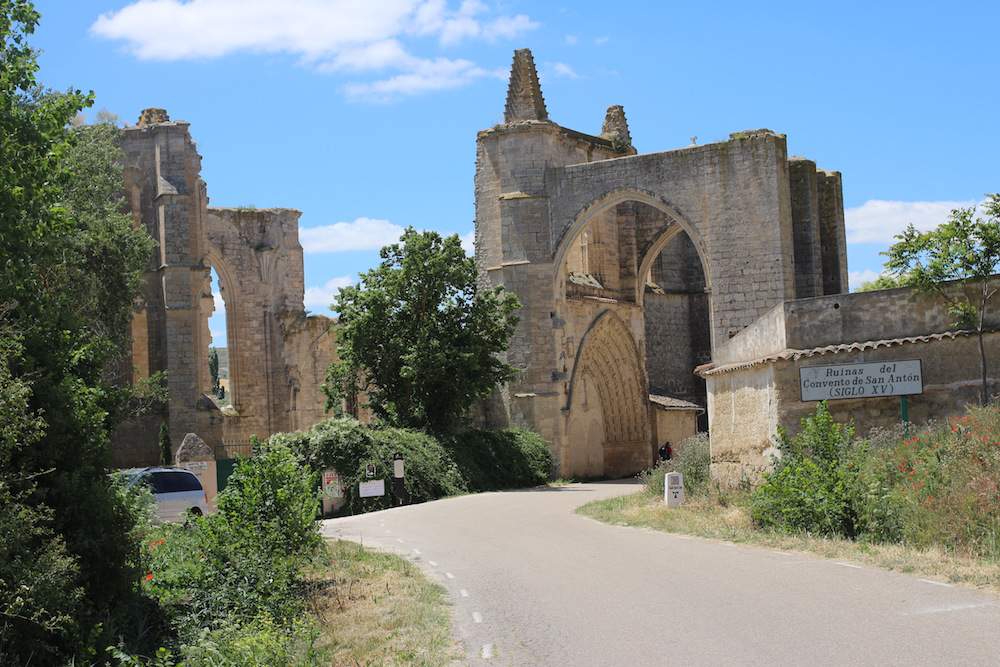
We picked our dates – May 28-July 8 – to avoid school holidays (mostly), avoid the risk of freezing temperatures, and to get out before the worst of the summer heat scorched the landscape. In my 38 days of walking, I was sometimes chilly in the mornings, was really seriously cold only four nights in the albergues, had only four days of rain, and only about a week of really hot afternoons.
For me, the timing was perfect.
Planning Your Walk
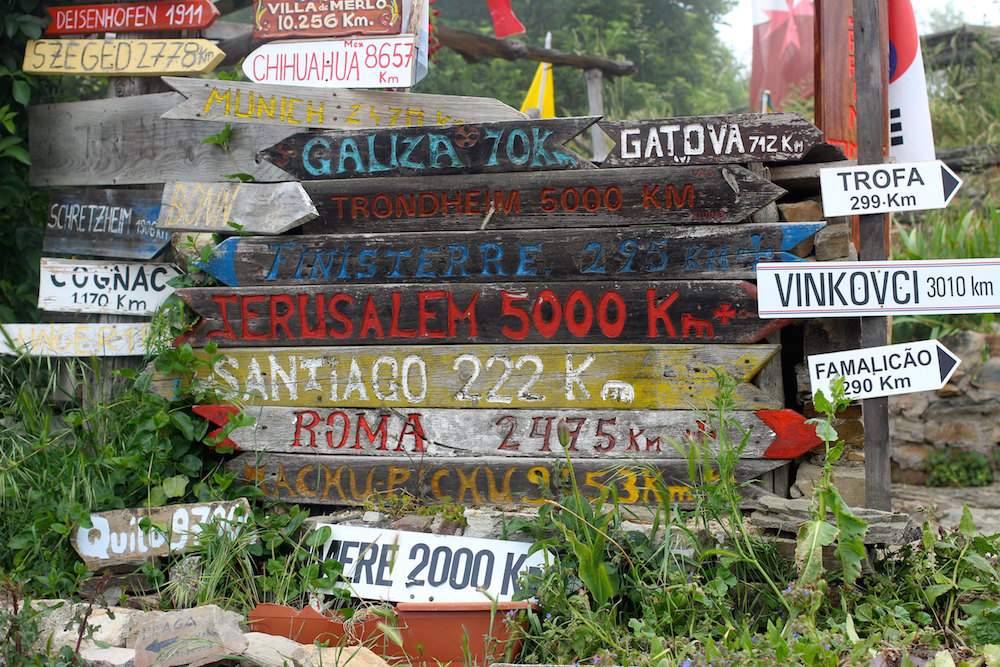
The guidebooks will tell you that you need 32 days, and they break that down for you in what seem like lovely, doable chunks when one is sitting at home, dry and warm. There are, however, a few on-the-trail realities that the guidebook breakdown doesn’t take into consideration.
- Your fitness level: If you aren’t regularly walking 9-12 miles (15-20 kilometers) a day at home, then walking 25-30 a day on the Camino might prove taxing. If you’re overweight, factor that in. If you aren’t used to carrying a pack, factor that in.
- Your speed: If it takes you 12 hours to walk what the book suggests won’t take more than six, that’s going to be an issue. You won’t have time to explore the towns, do laundry, journal, or otherwise enjoy your trip.
- Illness, or Injury: It’s not at all unusual for pilgrims to become ill or be injured on the journey. Knees and feet are the biggest culprits, but Jade ended up with a hospital visit and four days off of the trail due to a respiratory illness. How does that affect your schedule if that happens?
- Your need for rest: This is a highly personal consideration. Some people can, and do, walk every single day and longer distances than recommended because they find a rhythm and they love it. Other people find that they need far more rest than the two days the books figure in for the month. How much time do you want to spend chilling out in a cool town? Do you need extra days for side trips and excursions? You might.
Lodging

There are almost always options in a given town that are not listed in the guides. It also bears noting that comparing the guides from various countries sometimes yields interesting options that you might not have in yours.
Should you pre-book accommodation along the Camino?
The short version is that lodging, in general, is not a problem, and you don’t need to book it months in advance. The albergues DO fill up in busy periods and in the last 100 km (the most popular stretch to walk). The solution to this is to call ahead either the morning of each day, or a day in advance if you are really worried, and let them know you’re coming. Most places will hold a bed with a phone call and no deposit.
Budget
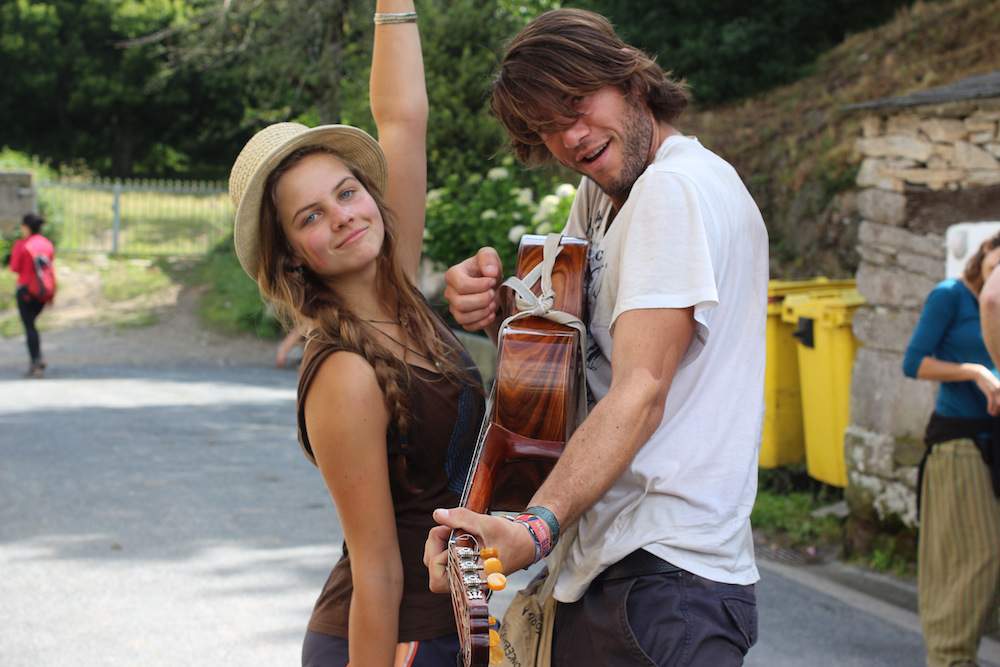
Lodging Costs
- Municipal albergues (the least expensive) run between 5-10 EU a night.
- This includes your bed, shared bathroom and showers, and often laundry options (either hand wash tubs, or coin operated machines). Many of them also have kitchen facilities.
- Private albergues will be slightly more expensive, from 10-20 EU a bed in a shared dorm. 25-50 EU a night for private rooms accommodating 1-3 people.
- The private albergues often offer breakfast and sometimes will have laundry service available as well.
Food Costs
- Meals run the gamut of pricing. Most common are the three course Pilgrim Menus, with wine included, for 10-15 EU average.
- When you get tired of those, search out the local restaurants and spend a little more for the variety!
- Breakfasts and lunches can be had in any bar of any little town for 5-10EU, less if you pick up fruits and veggies at a market stand and a loaf of bread from the bakery and picnic on your way.
- Of course, budget for drinks in the evening with new friends and a few splurges along the way!
Gear & Packing
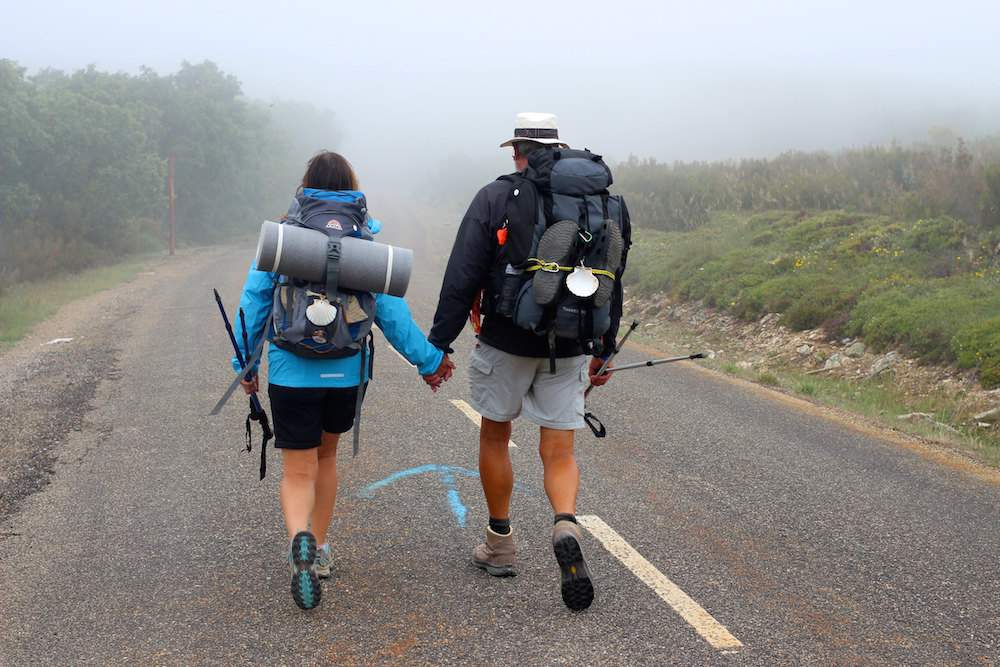
My top tips for packing light on the Camino:
- Trade your sleeping bag for a light sleep sack (most albergues provide a blanket)
- No more than three outfits (one to wear, one to wash and one for evenings out)
- Don’t bring your laptop or anything else to add weight or worry. Just don’t.
- Don’t pack three pairs of shoes and a bathrobe, like my Italian friend did.
- Don’t ship a whole box of crap you don’t need but are afraid you might, ahead of yourself to a hotel in Leon like a grandfather I know did.
- Don’t pack your entire medicine cabinet either.
- DO get properly fitted for a pack and train with it at the weight you will carry on the trail.
A Word on Feet

The most common injury and ailment on the Camino is trashed feet: blisters, cuts, worn raw places, lost toenails, you name it. Virtually everyone suffers to some degree, some of us worse than others. Training in your shoes helps, obviously, but it isn’t always a guarantee that you won’t have problems. My shoes were well worn in, and I suffered with worse feet than I’ve ever had the whole way to Santiago. C’est la vie.
On Adjusting Expectations
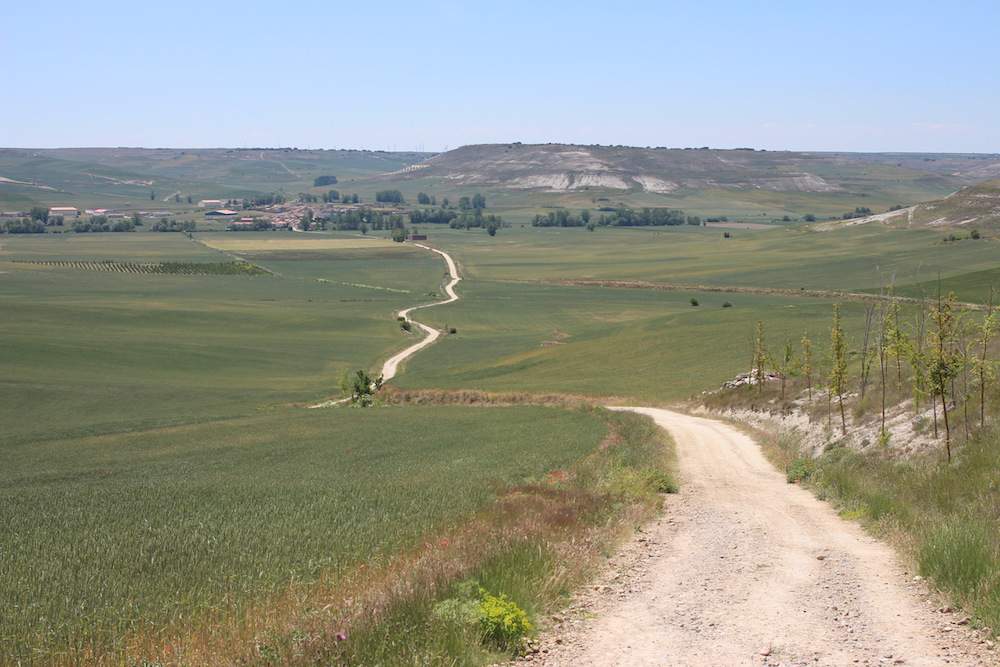
In the end, she hugged me goodbye, and we parted in Leon. She bussed ahead to execute her new plan, and I kept walking for the both of us. It was a good compromise. It allowed her to do the Camino, and get her Compostela, within the bounds of her resources of time, money, and health.
Cutting Corners Without Cutting Corners
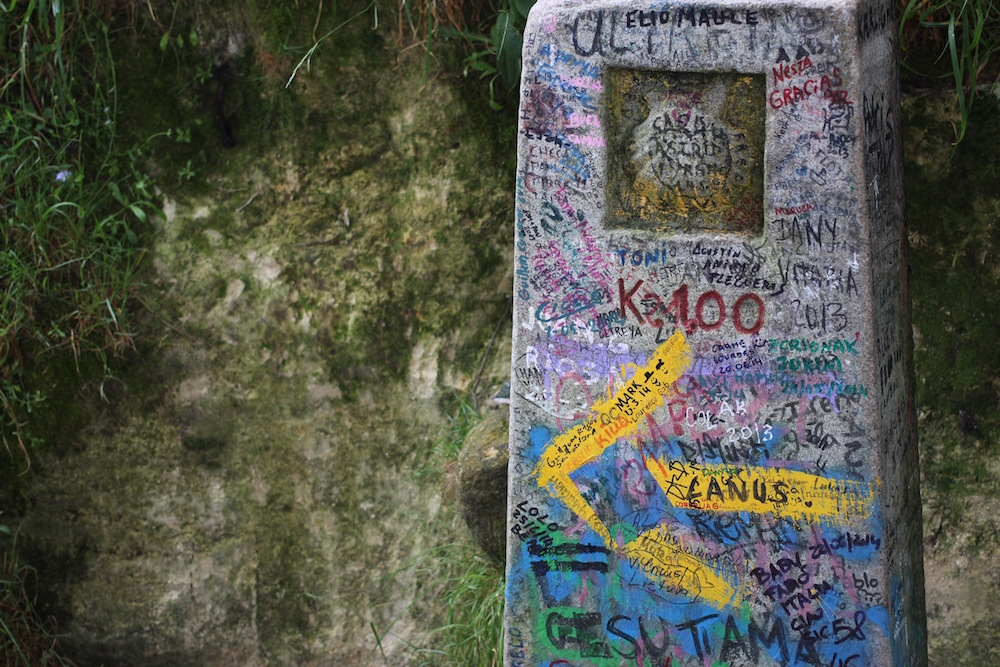
Then, I discovered Jaco-Trans.
From beginning to end on the Camino, you can have your bag shipped from albergue to albergue ahead of you.
It costs 7EU for most of the journey.
After Sarria, it’s only 3EU, I suppose due to the increased volume of pilgrims. If you are unable to carry your pack for some reason, or if your knees or ankles are bothering you, or if it’s just more fun and easier to carry your daypack with water and nothing else, I highly recommend shipping your bag.
Alternative Transportation
On one particularly tough day, there is the option of riding horses up the mountain to O’Cebrero. You’ll see the sign in the village at the base of the hill. You can’t miss it. If climbing is hard on you, especially at the end of a long day, then hitch a ride; it will be a great story, and you won’t miss a step of the trail.
Gaining Days & Shortening the Meseta
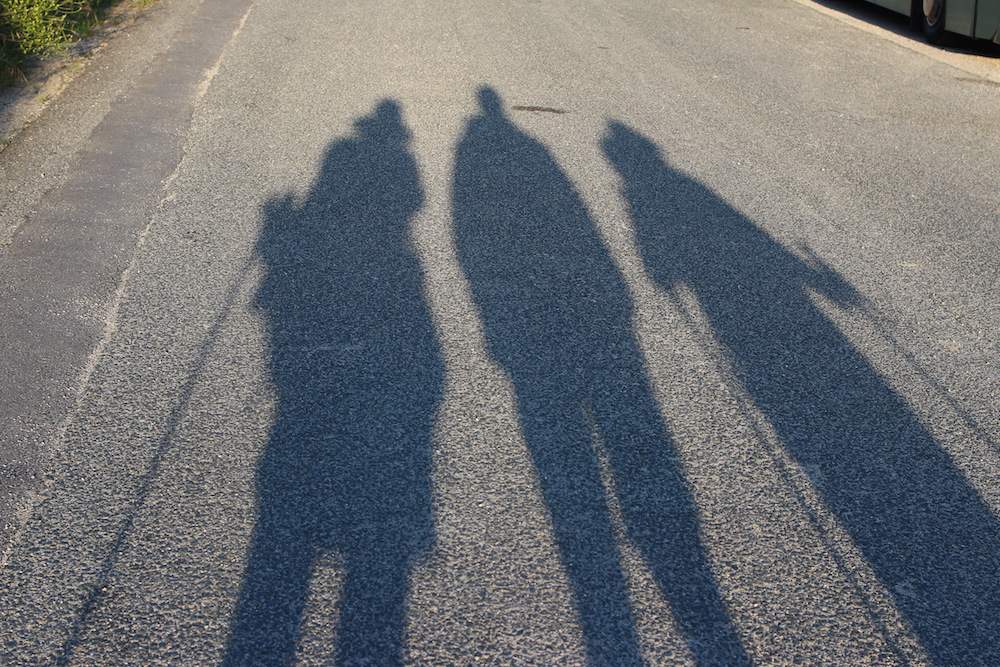
There are companies that will trade your backpack for panniers on a bike, ship your empty bag forward, and let you take off across the easiest part of the Camino for wheels. You’ll easily be able to ride twice, or three times, as far as you could walk. You’ll see it all, and authentically propel yourself over every inch of the terrain with your body, only faster and with more fun!
Have you walked the Camino? What’s your best piece of advice? What did you learn the hard way? Tweet us @bootsnall. I’m headed back to Spain in June to walk the final segment, from Santiago to the sea. Advice for that leg? Tweet me @edventuremama